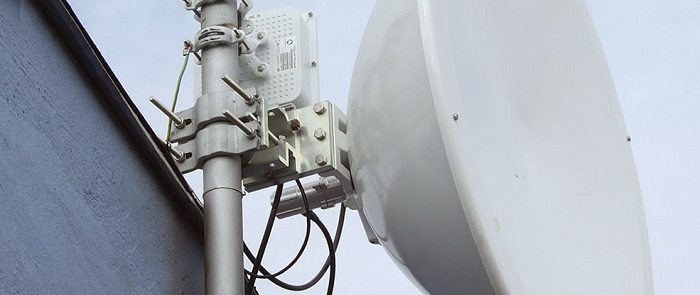
There are a number of scenarios where license-free wireless backhaul is preferable to other technologies, such as fiber and microwave.
One of the most notable uses is for fulfillment of services where rough terrain makes it too costly to run fiber. This can be common in rural areas or just crossing from one side of a highway to the other; the latter being less top of mind for wireless, until one starts analyzing the costs of permits and installations as well as time for actual completion. With equipment capable of delivering up to 700Mbps throughput and reaching distances over 60 miles, wireless technology has advanced to be a formidable alternative to high-capacity wired infrastructure.
Another consideration for wireless backhaul is whether it might be used as a temporary solution rather than a permanent one. Will weather impede the on-time completion of installing fiber to a new community? Can wireless be the solution until the thaw? When spring arrives, so do those outdoor events where vendors and attendees are demanding high-speed Wi-Fi over contested 3G/4G services. Preconfigured wireless links stored in strategic locations can restore services in case of fiber cuts or in the aftermath of natural disasters. The cost of being prepared is no longer prohibitive with today’s wireless solutions.

Proper preventative planning can reduce the potential downtime when primary, permanent solutions fail. The installation of wireless backhaul as a redundant facility can potentially make an outage transparent to the end customers. The use of license-free wireless backhaul in parallel to fiber, cable, millimeter wave links and microwave installations can provide the expected services until the primary facility is brought back online.
Other technologies
Other technologies, such as microwave and millimeter, can provide wireless connectivity but are limited compared to license-free solutions. Microwave lacks the flexibility of temporary installation due to the licensing process as well as costing at least five times more. While millimeter wave systems are becoming more cost competitive, their operation in the 60 to 80 GHz bands greatly limits the distance they can be deployed (fewer than 2 miles) and their susceptibility to precipitation-based interference can prevent their use in many geographic areas. Typical operation in the 5 GHz band for license-free technologies overcomes both the short distance and precipitation issues. The 4.9 GHz band for use by public safety agencies enjoys these same benefits. These do require a license application for permanent PTP links, but there is no charge and they are processed within hours. For more information, visit wireless.fcc.gov/uls.
License-free wireless broadband installations are not without obstacles; the most obvious being anyone can install a link almost anywhere, so there is potential for interference. However, today’s quality devices have built-in spectrum analyzers so any neighboring links can be detected, and the selection of a clear channel can be done directly via the GUI.
They also support dynamic channel hopping in case interference occurs after the installation. When long distance (+10 miles) is required, devices using 802.11 standards-based protocols will not perform efficiently due to the delay of receiving acknowledgements (ACK)s from the receiving end. Products with proprietary protocols that do not require the ACK exchange can exceed 60 miles with low latency.
These proprietary protocols also have interference mitigation algorithms that are not supported by 802.11 devices. Planning the two sites for the installation of master and slave devices is simplified with a number of free online link-path calculators. These tools require some basic information such as GPS coordinates, antenna height and output power. The output will typically show the quality of the link and a graphical display on a terrain map. When time comes to complete the installation on the selected tower, rooftop, water tower or grain elevator, there is even a free app on Google Store for finding the remote device using GPS radar and aligning with the help of camera based crosshairs. Watch a YouTube video about the apps below.
Now that the link is up as a primary or secondary system, permanent or temporary, remote monitoring and managing the site will ensure it runs at peak performance. Server, cloud and mobile-based software applications allow the devices to be monitored 24/7 with alerts sent to the responsible party in case preset threshold levels are exceeded. Device settings and even full firmware upgrades can be done remotely.
Download Ligowave’s LigoPTP 5-N/5-23 RapidFire data sheet to learn more.